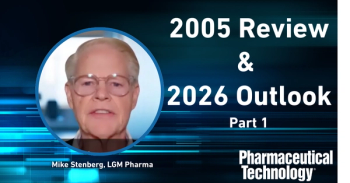
Equipment and Processing Report
- Equipment and Processing Report-08-21-2013
- Volume 0
- Issue 0
Best Practices for Restricted Access Barrier Systems in Aseptic Manufacturing
RABS is a flexible barrier system that maximizes product control but minimizes operator interaction when best practices are followed.
The restricted access barrier system (RABS) offers an effective approach to impact cleanliness in the manufacture of aseptic products. RABS provides a level of separation between the operator and product that affords product protection superior to traditional systems. However, to operate a RABS cleanroom successfully, several best practices must be followed.
No open-door intervention allowed
During the operation, the barriers may not be compromised; lifting the separation can lead to contamination and increased risk to the product. Therefore, when aseptic operations are carried out in a RABS, it is the intent to fully eliminate the need to open RABS doors. If the filling is interrupted with an open-door intervention, a complete cleaning and line clearance must be carried out, and the batch is eliminated.
During the line set-up stage, all machine parts and formats must be installed with the barrier closed by using a special glove-portal system. Thorough mock-up studies when designing a machine are essential. Such studies allow a well thought-through configuration of the machine and the barrier around it that allows the operator to reach all areas within the machine using the gloves. The mock-up studies simulate all routine operations and potential interventions on the machine. Operators of different departments (e.g., engineering and quality assurance) join forces to ensure the mock-up studies are as effective as possible.
High-level disinfection
Disinfection after each production batch must be completed. Once the filling process and the monitoring of the microbiological environment have been completed, the barriers are opened for cleaning. This is followed by a high-level disinfection with a sporicidal agent (e.g., peroxide suspension), which generates oxygen radicals to avoid build-up of resistance.
Integrity of gloves
Following production, all gloves must be tested for integrity and sterilized. Using a pressure-decay test, the gloves are removed and tested for even the smallest damage that could compromise the system. If the gloves are found to be airtight, they can be cleaned, steam-sterilized, and remounted back into the glove ports for use in the next production batch.
Aseptic transfer systems for zone transition
Materials and formats are only carried into the ISO 5 area using aseptic transfer systems. Any parts used in the production, including any raw materials such as syringes and stoppers, are sterilized in steam or dry heat and doubly packed. The outer packaging is sprayed with a sterilizing agent containing alcohol before being transferred to the ISO 5 area through a lock, and the outer packaging is removed. All steps are performed using the glove portal system. Packaging materials are also put into sterilized bags and placed in special containers. The containers are sprayed down prior to introduction so when they are opened inside the barrier, the content is exposed to ISO 5 conditions only.
Conclusion
A RABS process is safe and secure with both a cleanroom design and aseptic safety comparable to an isolator, but with a higher degree of flexibility. Automation of the system reduces the variability of operators while it also makes the entire process reproducible. At Vetter’s Ravensburg South production facility, for example, approximately four million media-fill units were filled over seven years in three different cleanrooms with RABS units with no resulting contaminated units. RABS is one of the most effective and efficient responses to current and future challenges in the manufacturing of aseptic products.
—Joerg Zimmermann is director of Process Development and Implementation at Vetter (
Articles in this issue
over 12 years ago
Researchers Seek Solutions to Tablet Stickingover 12 years ago
August 2013 Editor's Picks: Products from Eltherm and Netzschover 12 years ago
PACK EXPO Showcases Solutions for Inspection and SerializationNewsletter
Get the essential updates shaping the future of pharma manufacturing and compliance—subscribe today to Pharmaceutical Technology and never miss a breakthrough.




